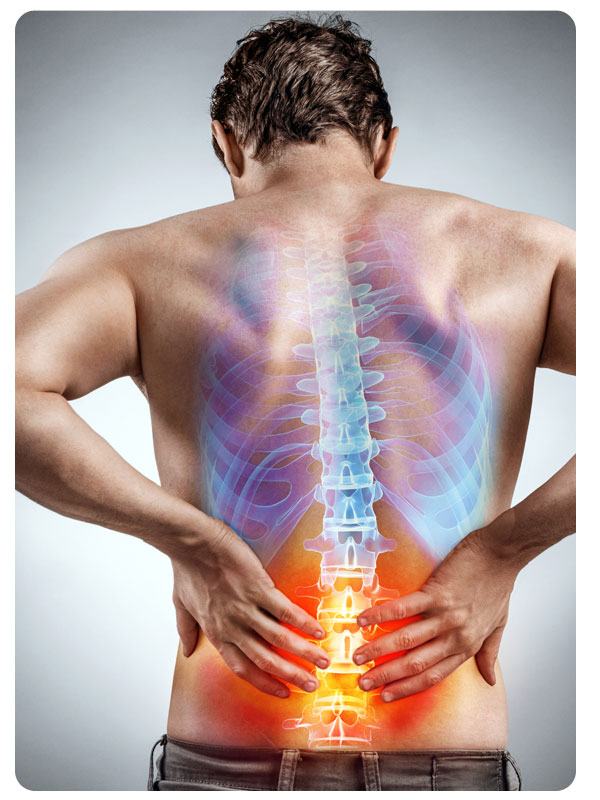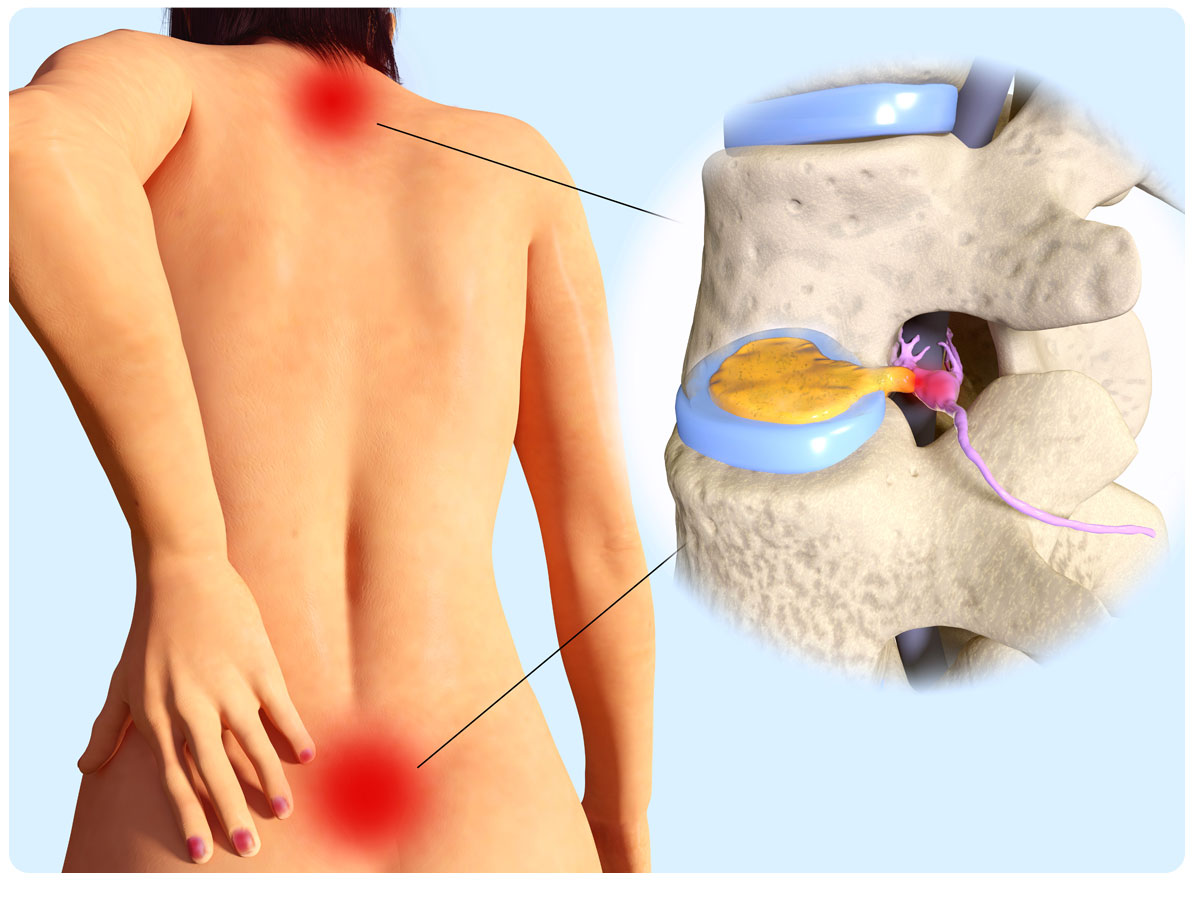Albuquerque Neck and Back Pain Treatment - Pinched Nerve Pain

Causes of Pinched Nerves
The most common cause of a pinched nerve is by “compression”. Compression of a nerve usually happens from a disc in the spine (neck, mid back, or low back) bulges and places pressure on the nerve next to it. Discs can be injured from repetitive motions, injuries, wear and tear, or lifting something that is heavy. Discs can weaken, tear, and bulge or herniate resulting in direct contact and pressure on an adjacent nerve. Nerves can also be injured outside of the spine and are most vulnerable at places in your body where they travel through narrow spaces, where there is a lack of soft tissue for protection, or where they contact a bone, ligament, or tendon. A common example of this would be a condition called carpal tunnel syndrome where the median nerve is compressed in the wrist causing hand numbness and pain.
Nerves are sensitive structures and are susceptible to injury. It is important not to ignore symptoms of numbness, tingling, or weakness as with prolonged compression, a nerve can be permanently damaged. Some of the common concerning symptoms of compressed nerves are weakness, "Pins and needles" or a burning sensation, pain in the neck or low back, radiating pain, numbness and/or tingling.
Treatment for Pinched nerves and Back Pain
Treatment of pinched nerves usually requires a good understanding of what is causing the nerve to be irritated. There are not only discs and nerves in the back, there are also joints called facet joints. The holes that the nerves exit the spine and go out to the leg or arm can be compressed by a disc but also by arthritic changes in the joint, thickening of ligaments, and postural changes.
Epidural Steroid Injection - One of the mainstays of treatment for pinched nerves is an epidural steroid injection. In this procedure, a small needle is inserted close to the spine where the nerve is getting compressed and a local pain killer or an anesthetic mixed with a steroid is administered over the affected area. The anesthetic helps break the pain cycle and muscle spasms while the steroid helps block the inflammatory response from the compression. By stopping the inflammation, the amount of stimulus to the pain fibers decreases, and our Albuquerque pinched nerve and disc treatment allows the patient time to engage in a rehabilitation program.
It is important to treat the other causes of compression while the pain is decreased. If posture, arthritis, ligament laxity, or certain activities are making the compression worse, post injection is the time to address these.
Other Modalities – There are a lot of modalities that can be used to help treat the overall condition that has lead to a pinched nerve such as strengthening, stretching, traction, spinal manipulation if appropriate, massage, and range of motion.
It these treatments are not sufficient; care can be escalated to minimally invasive or more aggressive surgery vs spinal cord stimulator trials to see if this helps.

Other causes of neck and back pain
Pain in the neck or back that radiates down the arm or leg can be caused by other factors as well. In the spine there are not only discs and nerves there are also ligaments, muscles, connective tissue, and joints called facet joints. Facet joints take a significant amount of weight and are involved in spinal movement. As the discs degenerate and decrease in size or bulge, a person’s body weight shifts to the facet joints. The more load the facet joints take, the easier they wear down and become degenerative. This can lead to inflammation, arthritis, and pain. It can also lead to decreased range of motion and difficulty moving around. Pain from facet joints often hurt first thing in the morning, after a long day, or when getting up after being in a seated position for an extended period. The pain can range from deep achy pain to sharp stabbing pain.
Treatment for Facet Joint related back or neck pain
Facet joints are different from other joints such as knee or shoulder joints as they can not be replaced. Currently, to treat facet joint pain we inject these joints with steroids or regenerative medicine. If this is not sufficient, our Albuquerque neck and back pain treatment can block the nerves that feel pain from these joints to confirm that this is the cause of your back pain followed by denervating (taking away the nerve communication) the joint and taking away the pain. To denervate the joint, we place a needle over the nerve that relays the pain signal from the painful joint to the spinal cord and emit a radiofrequency signal from the tip of the needle, ultimately heating up the nerve to the point that it will not be able to send the pain signal. This is often referred to as “Radiofrequency Ablation” or “burning of the nerve”. This Albuquerque neck and back pain treatment is an outpatient procedure that can be done in the clinic and is one of the most heavily supported evidenced-based treatments that we offer.


